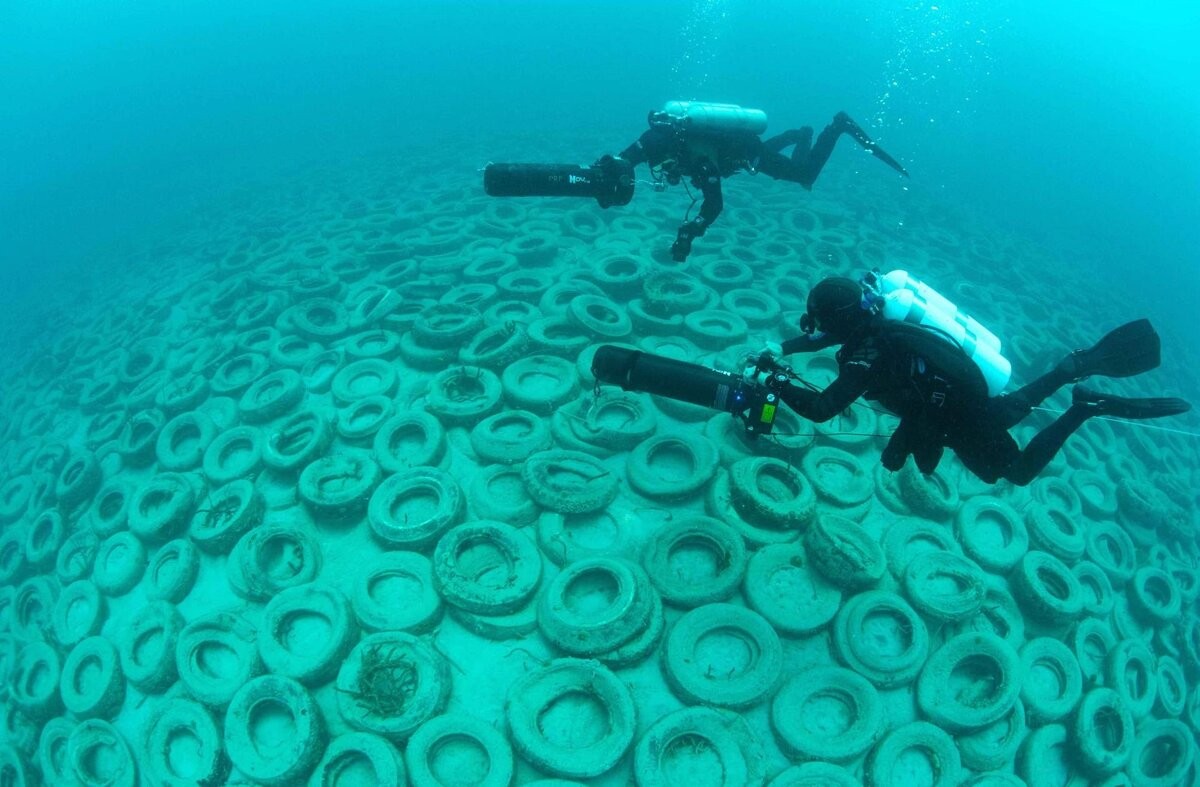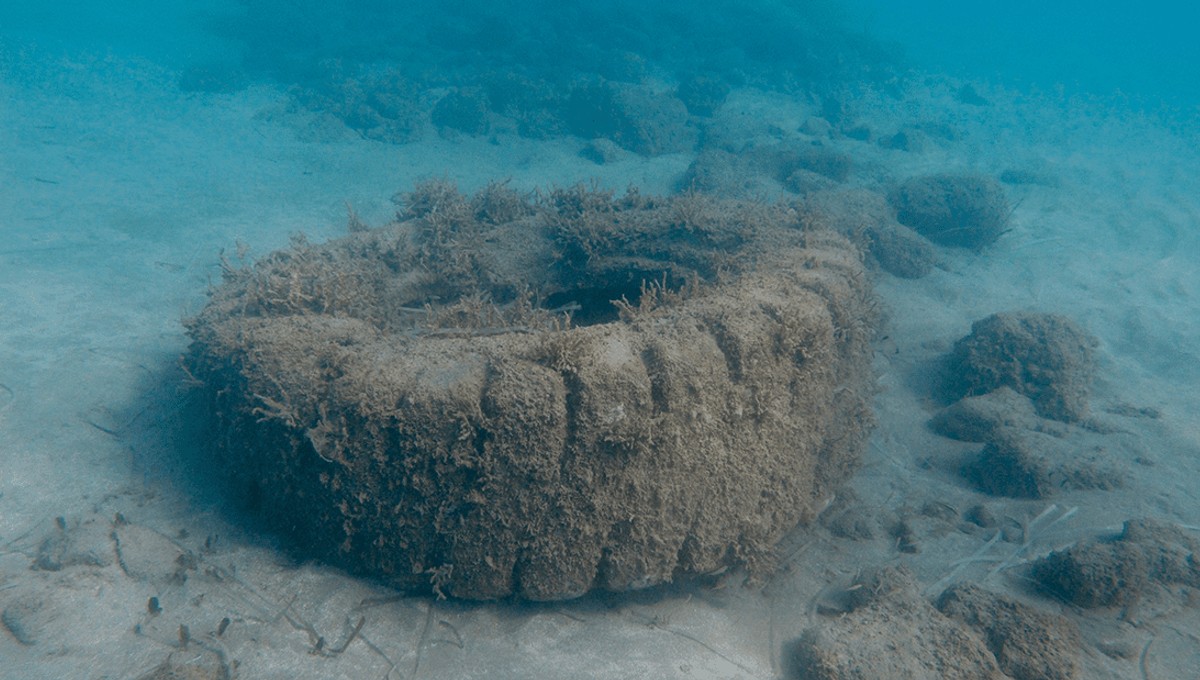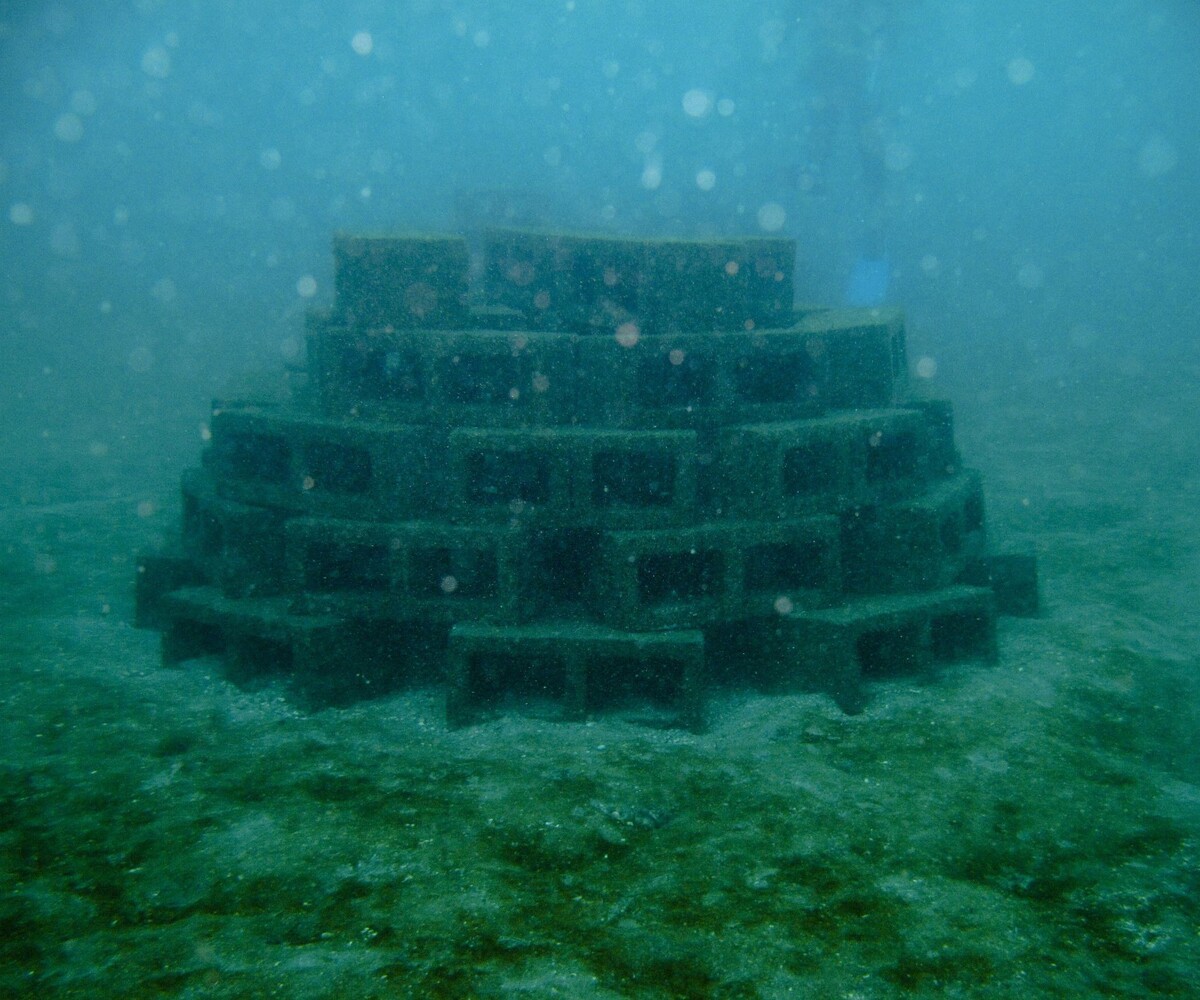Millions of Tires Beneath the Sea: A Well-Meaning U.S. Experiment That Created an Environmental Time Bomb
In the 1970s, waste management was not yet a priority. Across the United States, millions of tires piled up, stubbornly resisting decay and burning with toxic fumes when disposed of improperly. Recycling options were scarce, and the problem seemed insoluble. To tackle this waste mountain, authorities dumped 2 million used tires into the Atlantic off Fort Lauderdale, Florida. They were bound with steel clamps and nylon lines to hold the structure together, creating what would be known as the Osborne Reef—a giant underwater heap covering about 15 hectares at a depth of roughly 20 meters. Officials hoped the tires would become a solid base for coral and a thriving marine ecosystem. Fishermen welcomed the idea of new habitat that could boost fish stocks. But the plan was a miscalculation from the start. Seawater quickly corroded the metal fasteners, and the tires began to separate long before corals could settle. The reef never formed; instead, a chaotic mass of tires drifted and spread across the seabed under the influence of currents and storms. More troubling, the tires began to pollute the ocean. It is now understood that contact with salty water can release up to 120 different carcinogenic substances, posing hazards to marine life and the broader ecosystem.

In This Article:
A Plan Born in Waste: The Osborne Reef Project
In 1972, the Fort Lauderdale coast became the site of a bold experiment. Led by Gregory Macintosh, the U.S. Army Corps of Engineers aimed to create an artificial reef about 20 meters deep. That year, two million tires were dumped into the sea, linked by steel clamps and nylon lines to form a submerged hill—Osborne Reef, about 15 hectares in size. The theory was simple: the tires would provide a solid base for corals to attach, initiating a thriving marine ecosystem that could accompany a productive fishery. The project embodied a classic engineering mindset: solve a waste problem while boosting biodiversity at the same time.

Collapse and Pollution: The Reef Fails to Deliver
Yet the plan worked only on paper. Seawater rapidly attacked the metal clamps, and the tires began detaching before any corals could settle. The artificial reef dissolved into a loose, drifting mass that moved with currents and storms, scattering debris across the seafloor instead of creating a stable habitat. The tires also hindered coral settlement, turning what was meant to be a new home for marine life into a pollution source. Large areas of the ocean floor were increasingly blanketed with tires, threatening existing reefs and future reef development. Additionally, the tires released harmful chemicals into the seawater, including dozens—up to about 120—carcinogenic substances, a hidden cost of the experiment that reverberates through the ecosystem.

Trying to Fix It: Cleanup Comes at a Steep Price
Cleanup did not begin in earnest until decades later, during the 2000s. Removing tires from the sea proved technically challenging and extremely expensive. Experts estimated that lifting a single tire cost around $30, making a total bill in the millions for the two million tires that lay on the seabed. The most ambitious effort occurred in 2007, when the military managed to recover about 73,000 tires. Still, the vast majority remained on the ocean floor, continuing to cause harm. Around the world, artificial reefs experimented with a range of materials—from old ships to airplanes and even subway cars—some proving more effective than tires in supporting life. In New Jersey, for example, sunken subway cars, once cleaned of hazardous materials, created habitats that performed better than the tire-based reef and did less ecological damage.

Lessons, Modern Methods, and a Responsible Future
The Osborne Reef stands as a stark warning about how even well-intended plans can fail without thorough long-term analysis. Today’s artificial reefs use materials that are compatible with marine environments—concrete structures, stone blocks, and specially designed shapes that support coral growth while minimizing ecological disruption. Projects are planned with currents, seabed communities, and durability in mind. Experts estimate recovery of the affected seabed could take 100–150 years. If we act today, meaningful results might not appear until the mid-22nd century, underscoring the need for careful scientific testing before large-scale interventions. Ultimately, the lesson is clear: we should adapt to nature, not assume it will adapt to our plans. Other extreme experiments—such as storing nuclear waste in barrels—highlight how dangerous untested ideas can be when they shape entire regions or ecosystems. Such stories invite reflection on how many other well-meaning initiatives may carry hidden risks beneath the surface.

